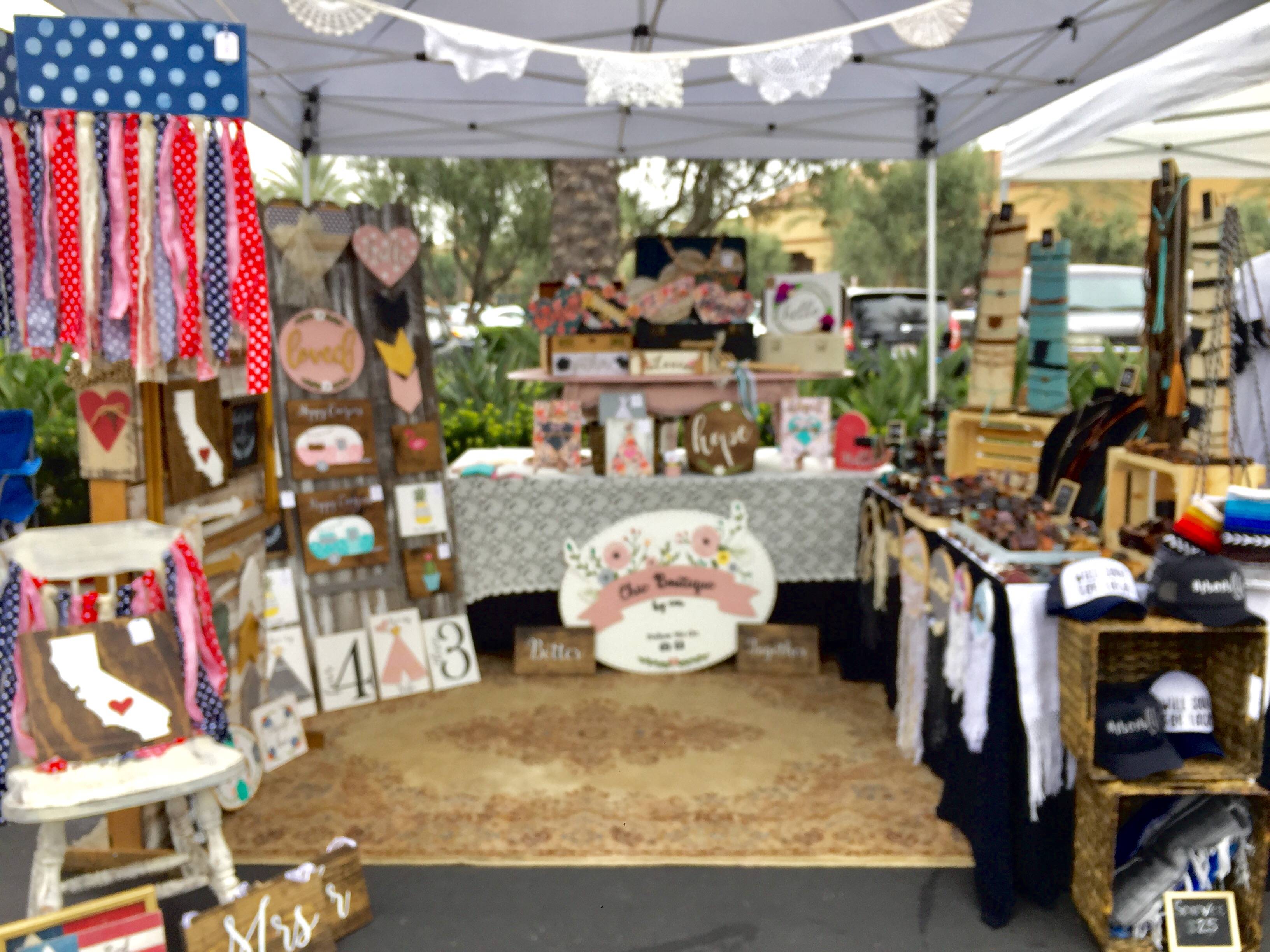Junk fairs, antique shows and pop-up markets are becoming ever more popular. And, no longer is the EZ Up Tent King of a show display. For hours only, small handmade businesses have an opportunity to create a visceral reaction through the art of their displays. How you decorate, organize and display your booth goes a long way into how consumers view your brand and ultimately how much they want to spend with you. So, as you prepare your products and merchandise, think also about how your small space can become your own personal shop for a day.
These are my top five recommendations for designing a show booth, no matter what you sell!
1. Incorporate TEXTURES

There’s nothing like a variety of textures and/or textiles to make a booth feel warm and welcoming. That may include making your hum drum EZ-up tent charming with curtains, signage and my personal favorite, plants! I naturally want to spend more time looking at a booth that feels warm and inviting and the more time I spend in that booth, the more likely I am to spend money. And, if you only sell one type of item, add displays that make it look visually interesting. For example, use suitcases and crates to stack, hang product with vibrant ribbons and add plants in between the display to suggest a feeling of life.
2. Use all AVAILABLE SPACE
BUT (and it’s a big But), keep it open. Don’t block the opening of your booth because you want people to be drawn in. I made the mistake of setting up a long table right in the very front of my tent at one of the flea markets I sell at. I wanted my best sellers to be right in the front and accessible. Instead, no one ventured past the table to look at everything that was “behind” it. I did a quick re-arrange and it solved the problem. Keep the perimeter of your booth full but leave the entrance area open so that customers naturally venture in.
Create small vignettes; functional ways for customers to visualize how your items would look in their home. Try not to have too many items clustered together, but a create collection of curated items that are displayed tastefully.
3. Draw the eyes UP

This concept goes along with using all of the available space. Don’t be afraid to stack, stack and stack. Pair colors and items so that your stacked pieces are well coordinated and the display leaves you longing for a little bit of something to take home. You can use pallets, lattice or fencing to hang along the side of your booth to create a display “wall” of sorts that utilizes space at eye level and above.
4. Group like OBJECTS

Chances are that if you are selling at a flea market, you don’t have a lot of duplicate pieces or objects. That doesn’t mean your display can’t have a natural flow. If you keep like objects grouped together, customers have a better sense of how to use them in their own home. Perhaps it is mixing and matching cylinder shaped items or coordinating like colors. It could be grouping things by era. If you struggle with this piece, do some shopping. Check out how Pottery Barn, Crate and Barrel, Restoration Hardware, Pier One, etc. set up their displays. Find the common theme and replicate it. Even better, visit an antique mall and pin point the booths that you like and shamefully copy. :/ It’s ok…we all do it!
5. Bookend your PRICE RANGE

I like the imagery of bookends. You have two bookends on either side holding in place a lot of books. When you are pricing items, think of one bookend as more expensive, the other bookend less expensive and all the books as the middle of the road price. If all you carry in your booth are multi-hundred dollar items, you are less likely to sell much. On the flip side, if you have one or two sales, it makes for a great day. But, if you don’t…well…that’s a lot of work for just a couple of sales. If you have too many less expensive items…$1 items…you are going to have to sell an awful lot of things to pay for the time and cost of participating. The most profitable vendors at the knot too shabby BAZAAR have a great variety of small, medium and high priced items. The high priced pieces showed the quality of their work while they managed to have some great low priced takeaways. But, it was the mid-range priced items that gave them the most bang for their buck.
For more ideas, check out our Decorating and Displays pinboard on pinterest.




